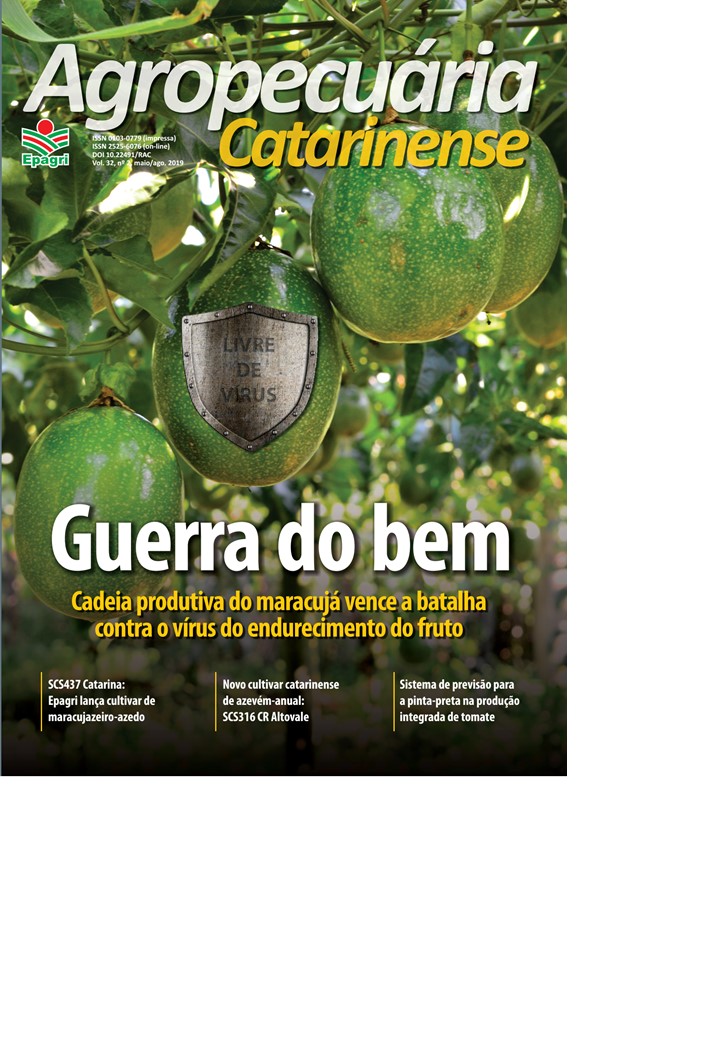Spittlebugs in Santa Catarina: assessment of species complex and natural incidence of entomopathogenic fungi
Keywords:
Cercopidae, amostragem populacional, Notozulia entreriana, Deois schach, controle microbiano.Abstract
Abstract – Systematic surveys were conducted to determine the proportion of species of spittlebugs and assess the natural incidence of entomopathogenic fungi species on populations collected in pastures located in different municipalities of the state of Santa Catarina, Brazil. For such, adult specimens were collected in pastures of bermudagrass, Cynodon dactylon cv. Tifton 85, without application of mycoinsecticides from 12 municipalities using a sweeping net device. In the laboratory conditions, the proportion of spittlebugs species and their natural mortality was observed for 10 days. Their cadavers were stored and disinfected, being kept on Elisa plates to assess the incidence of fungi species and their subsequent isolation. Based on obtained samples, seven spittlebug species were identified (Notozulia entreriana, Deois schach, Deois knoblauchii, Mahanarva integra, Deois flavopicta, Deois flexuosa, Deois incompleta), being N. entreriana and D. schach classified as super-frequent, constant, super-dominant and super-abundant according to the faunistic analysis employed. Moreover, 15 fungi species were found (Alternaria sp., Aspergillus sp., A. niger, Bipolaris sp., Cladosporium sp., Curvularia sp., Metarhizium sp., Mucor sp., Nigrospora sp., Penicillium sp., Pestalotia sp., Pithomiices sp., Monilia sp.) in association with spittlebugs. Most are recognized as opportunistic pathogens or plant endophytes. Natural incidence of entomopathogenic fungus Metarhizium spp. was low in all sampled areas (0.7% of the total of collected spittlebug).
Metrics
Publication Facts
Reviewer profiles N/A
Author statements
- Academic society
- Epagri - Revista Agropecuária Catarinense
- Publisher
- Empresa de Pesquisa Agropecuária e Extensão Rural de Santa Catarina - Epagri
Downloads
Published
How to Cite
Issue
Section
License
Copyright (c) 2019 Revista Agropecuária Catarinense

This work is licensed under a Creative Commons Attribution 4.0 International License.





